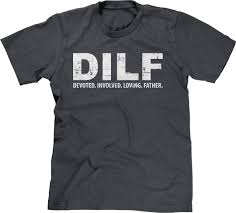The Meaning and Cultural Impact of the Term “DILF

In contemporary vernacular, the acronym DILF has gained prominence, particularly within internet culture and social media. Derived from the expression “Dad I’d Like to F***,” it parallels the more widely known term MILF, “Mom I’d Like to F***.” This phrase encapsulates the sexual attractiveness and appeal of certain fathers, often characterized by their maturity, physical fitness, and nurturing attributes. The evolution of the term DILF reflects broader societal shifts in attitudes toward aging, sexuality, and gender roles. This article delves into the origins, cultural significance, and implications of the term DILF, examining how it intersects with modern notions of masculinity and fatherhood.
Table of Contents
ToggleOrigins of the Term
The term DILF, though not as historically entrenched as MILF, appears to have emerged in the early 2000s alongside the proliferation of internet forums and social media platforms. While pinpointing the exact moment of its inception is challenging, its rise parallels the broader trend of acronym-based slang that gained traction during this period. The popularity of MILF, particularly following its prominent mention in the 1999 film “American Pie,” likely influenced the adoption of DILF as its male counterpart.
Linguistic Roots
Acronyms as slang often serve to encapsulate complex ideas or taboo subjects in a more digestible form. In the case of DILF, the acronym functions to highlight the sexual desirability of a father, a notion that might otherwise be uncomfortable or taboo to express outright. This linguistic trend underscores a shift towards more candid discussions about sexuality and attraction in popular culture.
Cultural Significance
The emergence and popularization of DILF signify more than just a catchy acronym; they reflect evolving cultural norms around attractiveness, aging, and parenthood. The concept challenges traditional stereotypes of fathers, presenting them as not only caretakers but also as sexually appealing figures.
Changing Perceptions of Masculinity
Historically, masculinity has often been associated with youth, virility, and physical prowess. The notion of an attractive father, encapsulated in the term DILF, disrupts these traditional ideals. It suggests that maturity and the responsibilities of fatherhood do not diminish a man’s sexual appeal; instead, they can enhance it. This shift aligns with broader changes in societal attitudes toward aging and attractiveness, where older individuals are increasingly celebrated for their experience and confidence.
Media and Representation
The portrayal of attractive fathers in media and popular culture has further cemented the concept of the DILF. Television shows, movies, and advertisements frequently feature fit, stylish, and nurturing fathers, contributing to the normalization of this archetype. Celebrities such as David Beckham, Ryan Reynolds, and Idris Elba are often cited as epitomes of the DILF, blending fatherhood with charisma and sex appeal.
Intersection with Gender Roles
The DILF phenomenon also intersects with evolving gender roles, particularly in the context of parenting. Traditional gender roles have often cast fathers in the role of breadwinners, with limited involvement in day-to-day child-rearing. However, contemporary portrayals of fathers emphasize their active participation in parenting, blurring the lines between traditional maternal and paternal roles. The sexualization of fathers through the DILF lens further challenges these conventions, presenting fathers as multifaceted individuals who can balance caregiving with attractiveness.
Psychological and Sociological Perspectives
From a psychological and sociological standpoint, the DILF phenomenon offers intriguing insights into human behavior and social dynamics. It reflects how attraction is influenced by various factors, including age, maturity, and social roles.
Evolutionary Psychology
Evolutionary psychology provides a framework for understanding why certain traits are perceived as attractive. Maturity, stability, and caregiving abilities are qualities that may be associated with successful parenting and survival, which could explain the appeal of fathers. The DILF concept, therefore, might be rooted in an evolutionary preference for partners who exhibit these traits, signaling their potential as reliable and supportive mates.
Social Validation and Self-Perception
The recognition of fathers as sexually desirable can also impact self-perception and social validation. Fathers who are labeled as DILFs may experience a boost in self-esteem and confidence, reinforcing their identity as attractive and desirable individuals. This validation can have positive effects on their overall well-being and relationships, contributing to a more balanced and fulfilling life.
Implications and Criticisms
While the term DILF carries positive connotations for many, it is not without its criticisms. Some argue that the sexualization of fathers, much like the sexualization of mothers, can be problematic and reductive.
Objectification and Sexualization
Critics of the DILF phenomenon point out that reducing fathers to their sexual appeal can lead to objectification, where their value is primarily based on their physical attractiveness. This perspective risks overlooking the complexities and multidimensionality of individuals, reducing them to simplistic stereotypes. Moreover, it can perpetuate unrealistic standards of attractiveness and body image, contributing to societal pressures on fathers to maintain a certain appearance.
Gender and Power Dynamics
The sexualization of fathers through the DILF lens also raises questions about gender and power dynamics. While some may argue that it empowers fathers by celebrating their attractiveness, others contend that it reinforces patriarchal norms by focusing on men’s physical appeal. This duality highlights the nuanced nature of the term and its implications for gender relations.
Conclusion
The term DILF, while initially a playful and humorous acronym, carries significant cultural weight. It reflects changing attitudes toward masculinity, aging, and parenting, challenging traditional stereotypes and celebrating the attractiveness of mature fathers. Through its widespread use in media and popular culture, the DILF phenomenon underscores a broader shift towards more inclusive and diverse representations of attractiveness and gender roles.
However, it is essential to approach the concept with a critical eye, recognizing both its empowering potential and its limitations. By examining the DILF phenomenon through various lenses—linguistic, cultural, psychological, and sociological—we gain a deeper understanding of how language and societal norms shape our perceptions of attractiveness and identity.
As society continues to evolve, so too will the ways in which we understand and celebrate different forms of attractiveness. The DILF phenomenon is a testament to the dynamic nature of cultural norms, highlighting the ongoing interplay between language, identity, and societal values.
4o
